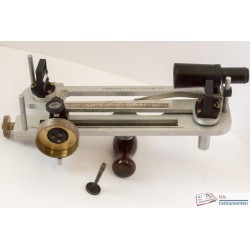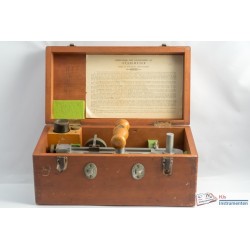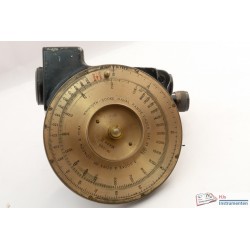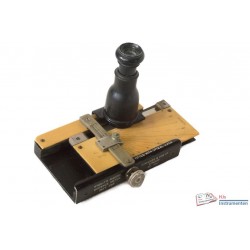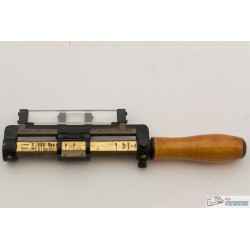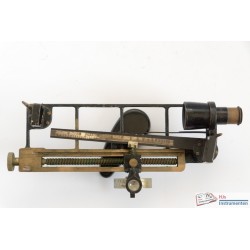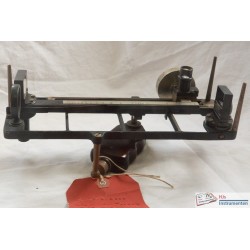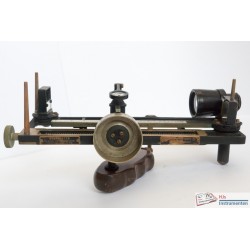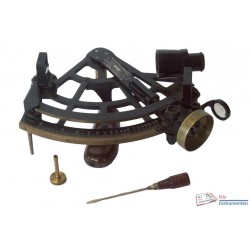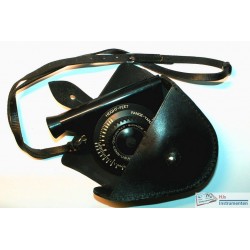Distance
Distance measurements can be performed using different methods.
- The simplest method is ofcourse the direct measurement using a tape, chain or staff. Of these a number are part of my collection.
- Next came the optical instruments, also known the stadimeter. The basic stadimeter uses a set of mirrors or prism to measure the distance provided that the length or height of an object is known. Multiple stadimeters from WWI and WWII are part of my collection as well as a plastic one from the 1960's. The fixed base stadimeter inverses the process placing the two mirrors a fixed distance from each other on a baseline of anywhere between a few decimetres up to metres.
- Last but not least are the Electronic Distance Measuring (EDM) deviced. All EDM's in my collection are from Wild Heerbrugg and can be mounted on a selection of theodlites from Wild Heerbrugg. Their accuracy is at the mm level where the most powerfull can cover a distance up to 20 km.
- Finally there is the micrometer, technically still a direct measurement but over very small distances. I have put these in a separate category to distinghuish them from the long(er) distance direct measurement devices.
Subcategories
-
EDM
The Electronic Distance Meter uses electromagnetic waves to measure the distance. Originally these used radio waves for the measurements but later models all use laser / infrared light. The EDM originates from surveying but is now also used (in a small package) for home improvement. The optical EDM in surveying is used together with a thedolite and then becomes a tachymeter or total station. In home improvement it replaces the tape measure. Most EDM's in my collection are from Wild Heerbrugg.
-
Tapes and chains
The simplest of measuring instruments is the direct reading measuring tape, chain or staff. For surveyors the chain has long been the standard instrument untill being replaced by the tape some decades ago. The measurement distance of tapes and chains seldom exceeds 20 to 30 meters and for longer distances multiple measurements have to be made. When done correctly these can be very accurate. For home improvement the classic (metal) tape is used.
-
Stadimeter
The stadimeter is based on the same principle as the sextant. But rather than directly measuring an angle the stadimeter is set-up in such a way that it translates the measured angle into a distance using the height or width of an object.
Depening on the model the angle is measured using a fixed (horizon) mirror with a movable index mirror or using a prism. In both cases the front / bottom of the object is brought in line with the end / top of the same item. The length between the bottom and top (or front and end) of the object is set on the instrument and the length read of from the corresponding scale.
-
Micrometer
The micrometer measures very small distances very accurate. Used in engineering for making very precise measurement I have a few in my collection that are used in the reparation and restoration of instruments as well as for general use.

